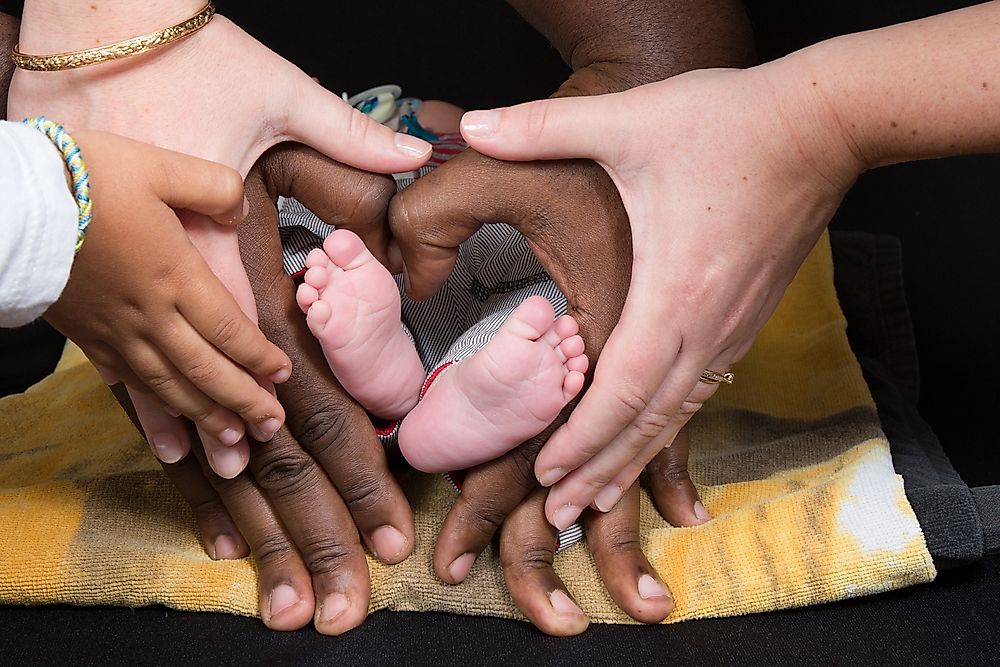What Is Ethnogenesis?

Ethnogenesis is a term derived from two Greek words “ethnos” which means a group of people and “genesis” which means beginning. Ethnogenesis refers to the creation and expansion of an ethnic group. Ethnogenesis occurs through either self-identification process or outside-identification process. There are numerous cases of ethnogenesis recorded in history.
Types of Ethnogenesis
Ethnogenesis is either active or passive.
Active Ethnogenesis
Active ethnogenesis happens when governments, intellectuals, or leaders deliberately design a new ethnicity that comes into existence, usually to solve a political issue or make all the ethnic boundaries conform to the already existing political borders. Active ethnogenesis occurs during the creation of a new state.
Passive Ethnogenesis
Passive ethnogenesis, also referred to as natural ethnogenesis, occurs in the buildup of markers of different cultural group-identity forged through their relations with the environment, religion, and culture divisions between migrations and sections of society among other processes. Such processes are associated with the creation of a language or language revival which eventually becomes the national language. A law can be enacted to promote ethnology to exclude or include any minority group living in a given country. The integrationalist policy of France is inclusive, and the law states that all individuals born or legally residing in France and their overseas territories are Frenchmen. The integrationalist law does not make any racial or ethnic distinction in France. Everybody living in French republic become citizens of France.
How Language Rival Affects Ethnogenesis
The most crucial factor in authenticating the identity of an ethnic group is the language. Reviving an ancient racial identity always posses a language challenge since all archaic dialects lack expression for current experiences. During the 1990s, there was a language rival between the nationalists of Basque state and the Celtic fringes from Wales. The revival of the Irish language in Ireland played a significant role in reclaiming the identity of the Irish. In Belgium, language has been a crucial and disruptive political force between the Franco-Celtic Walloons, and the Dutch and Germanic Flemings since 1831. In Germany, there existed a linguistic and ethnological difference between two regional groups from Sicilians in the South to the Lombardian in the North. In the 19th century, the Fennoman movement of Finland tried to promote the status of the Finnish language from peasant level to be the official language of Finland instead of Swedish. Therefore they created the Finnish party to help them pursue their national goals of the Fennoman movement, and this resulted in the people using Finnish language as the official language in 1892. The Svecomans who opposed the Fennomans supported the use of Swedish as the national language and it was the minority language only used by the elite in government. The leader of Svecomans believed that the country has two races and the Swedish from the Germanic race was more superior to the Finnish population who were the majority.
The Relationship Between Religion and Ethnogenesis
Some cultural markers associated with the religions can be the primary components of some ethnic identities. Ethnic definitions change over time, it can be changed by outsiders or member of the groups. During the 19th century, the Europeans categorized the Arabs and Jews as a single ethnic bloc referred to as the Hamites or Semites. The name Hamites was later associated with the Sub-Sahara Africans. The Muslims, Hindus, Jews, and Christians are aligned with different ethnicities which use different dialects and cultures associated with their dialects. Some religious sects like the Mormons, Yazidi, Amish, and Zoroastrians are associated with specific ethnic groups, and they have numerous firm rules which their members must follow. Some of these regulations include maintaining endogamy and also censoring anyone who marries outside their sects or raises their children outside their faith.
The Relationship Between Geography and Ethnogenesis
Numerous geographical factors have caused the genetic and cultural isolations of a specific ethnic group from the society. Usually, the people who settle in remote habitats tend to intermarry over generations, and this will result in acquiring distinctive genetic and cultural traits, evolving from their interactions with the environment and cultural continuity. In this scenario, ethnogenesis occurs in an ethnic identity which is less value-loaded than the identity forged in contradictions to the competing populations. Social organizations tend to hinge mainly on familial identification and not the broad collective identity, especially in the pastoral mountain populations.
Ethnogenesis in North America
Under the leadership of Hernando Soto, the Spanish expedition left Cuba for Southeast America and Florida in search of gold from 1539 to 1543. Soto led his men on a violent rampage through Florida, Georgia, Tennessee, Texas, Alabama, Mississippi, and Arkansas and they destroyed numerous villages while killing the natives. Their actions resulted in the introduction of diseases from Europe which weakened the Indians, and this forced them to relocate to the countryside where new political structures and smaller villages were developed. By 1700 all the major tribal towns destroyed by Soto had disappeared, and the smaller ethnic tribes started forming smaller confederations of autonomous communities. The blend of different tribes resulted in the emergence of a new group for the survivors of the Spanish invasion. After 1700 the native tribes were new groups formed by the refugees who survived the violence brought about by exploration.











